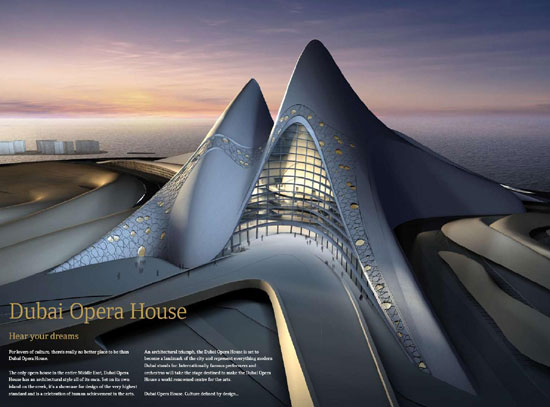New York is a crowded city with around 8 million people occupying in only 304.8 square miles of land, the small area of land can’t provide everyone’s demand. However, adding little bits of entertainment, accessibility, and comfortably for these New Yorkers, they can live happily. Well the Plus Pool is a state of the art, first-ever floating water-filtering pool in the Hudson River of New York City. It is a public pool shaped like a plus sign (+) with separate pools and with different features in pool side. There would be a kid’s, lap, sports, and lounge pool, where when it is combined, the two sides would form into an Olympic size swimming pool (164 feet long)! The area of this fancinating pool is 20, 550 square feet, can carry 285 000 gallons of water, and around 481 people! Besides it’s unique shape and size, what it is really known for is the filtration the pool does to the Hudson River’s waters. 
 Using it’s many walls, like a giant strainer, it can remove bacteria, trap odors, and can make it completely safe for people to swim in. This will be the first after 100 years where New Yorkers can finally swim in clear natural river water. When this pool is operating everyday, it’ll is also beneficial towards the environment since it would clean up half a million gallons river water daily, making water habitats to be more sustainable to live in. They even had mutiple of meetings with NYC Parks & Recreation, Coast Guard + more and have teamed up with groups such as; IDEO, Storefront for Art and Architecture Architizer. So far, they gathered more than $50,000 from supporters, so they can kick start their experimental plus pool to test out how it’ll be like in the river’s waters and make this project come to a reality. When the experimental plus pool turns into a success, then they’ll start building the actual plus pool and have it available out for the public in around summer of 2016!
Using it’s many walls, like a giant strainer, it can remove bacteria, trap odors, and can make it completely safe for people to swim in. This will be the first after 100 years where New Yorkers can finally swim in clear natural river water. When this pool is operating everyday, it’ll is also beneficial towards the environment since it would clean up half a million gallons river water daily, making water habitats to be more sustainable to live in. They even had mutiple of meetings with NYC Parks & Recreation, Coast Guard + more and have teamed up with groups such as; IDEO, Storefront for Art and Architecture Architizer. So far, they gathered more than $50,000 from supporters, so they can kick start their experimental plus pool to test out how it’ll be like in the river’s waters and make this project come to a reality. When the experimental plus pool turns into a success, then they’ll start building the actual plus pool and have it available out for the public in around summer of 2016!
Rather than being stuck in the city, why not just swim outside and look at the New York skyline? This is very exciting as it helps the city bond together, supports healthy active living, and it can help save the environment bit by bit, since New York rivers have a few of the coldest and dirtiest waters out there in the world. The design itself is very creative, having each side of the plus pool to fit everybody else’s needs.  However, what I dislike about the design is that it might not be big enough for everybody, since some people want it to be private and hang with their own friends and not be crowded by a bunch of other wet people. For example, take the sports pool, it’s only one pool for one game, which means it is only available for a certain amount of players, making some other people impatient. It also varies as the sports pool might change into different types of sports such as water polo or underwater football, thus taking more time to set up. I also feel like their pool lacks shelter, as some people just want to hide under the sun to cool off or to not get a tan, but it is all open space and open for the sun to tackle you with its sun rays. It also lacks shelter and safety in a way where natural disasters might occur, especially since the civilians are already in a river, storms like Hurricane Sandy might rush through and pull people off the pool with its waves. Well, these are based on my opinion; however, if you oppose, that is totally your opinion and I respect it. Don’t get me wrong but I still like the idea of having the Plus Pool by getting the city to bond together, supports healthy active living, and help save the environment bit by bit.
However, what I dislike about the design is that it might not be big enough for everybody, since some people want it to be private and hang with their own friends and not be crowded by a bunch of other wet people. For example, take the sports pool, it’s only one pool for one game, which means it is only available for a certain amount of players, making some other people impatient. It also varies as the sports pool might change into different types of sports such as water polo or underwater football, thus taking more time to set up. I also feel like their pool lacks shelter, as some people just want to hide under the sun to cool off or to not get a tan, but it is all open space and open for the sun to tackle you with its sun rays. It also lacks shelter and safety in a way where natural disasters might occur, especially since the civilians are already in a river, storms like Hurricane Sandy might rush through and pull people off the pool with its waves. Well, these are based on my opinion; however, if you oppose, that is totally your opinion and I respect it. Don’t get me wrong but I still like the idea of having the Plus Pool by getting the city to bond together, supports healthy active living, and help save the environment bit by bit.
Want to learn more and help contribute to the project?
Check out their site here; http://www.pluspool.org/






![Final Product [Floor Plan]](https://rachelchengsite.wordpress.com/wp-content/uploads/2014/06/bungalow.jpg?w=634&h=444)









 contain data like the weather, social networking, calling, photos, email, music, and many many more. Now, there is a new type of innovation going into hand which is (and already is) changing our world as we know it. The product that I’m talking about is, yes the one on the title; Google Glass. Google Glass is a type of wearable technology that is like the smartphone, but hands-free, where you would say commands through your natural voice or through the small touch pad on the right-side of the glasses. The Google Glass also added new applications compared to the smart phone; such as having new apps, facial expressions, voice translations, exercise, and photo manipulations. They also included of course Google applications such as; Google +, Google Maps, and Gmail. This lovely product was already out for the public on April 15, 2014; not too long ago, and it costs around $1,500 – $2,000 in depending on the model and style. It holds 16 GB, it is only 50 grams in weight, and is available for people with prescriptions.
contain data like the weather, social networking, calling, photos, email, music, and many many more. Now, there is a new type of innovation going into hand which is (and already is) changing our world as we know it. The product that I’m talking about is, yes the one on the title; Google Glass. Google Glass is a type of wearable technology that is like the smartphone, but hands-free, where you would say commands through your natural voice or through the small touch pad on the right-side of the glasses. The Google Glass also added new applications compared to the smart phone; such as having new apps, facial expressions, voice translations, exercise, and photo manipulations. They also included of course Google applications such as; Google +, Google Maps, and Gmail. This lovely product was already out for the public on April 15, 2014; not too long ago, and it costs around $1,500 – $2,000 in depending on the model and style. It holds 16 GB, it is only 50 grams in weight, and is available for people with prescriptions.






